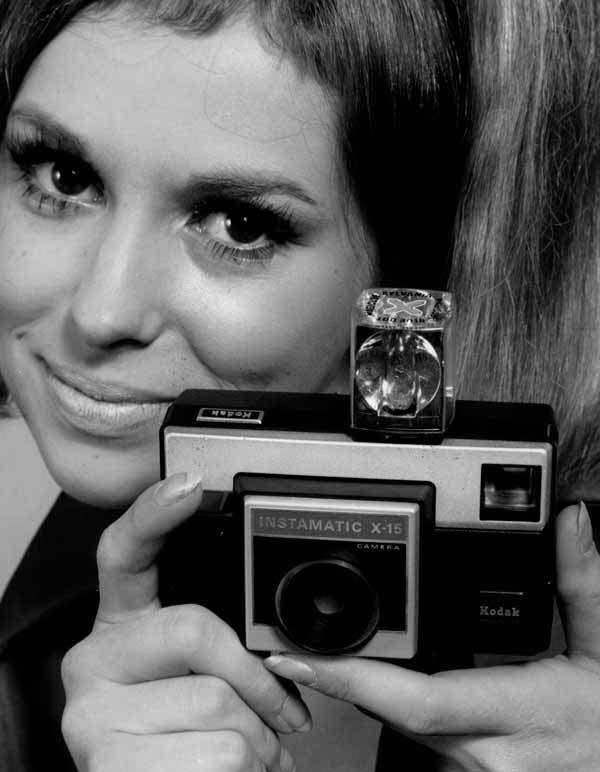This camera revolutionized photography. Whatever happened to the Kodak Instamatic?

With Halloween around the corner, it's a good time to look back at how a people used to capture family memories.
The Kodak Instamatic camera was called "revolutionary" when it hit the market in a huge way in March 1963. The public and industry analysts alike loved the Instamatic for its simple-yet-sophisticated features. Consumers snapped up more than 70 million Instamatics and shutterbugs everywhere snapped "Kodak Memories" like never before.
Kodak introduced several versions of the Instamatic over the years, with the common feature being the easy-to-load film cartridge, which eliminated the problems associated with handling and loading "roll" film. Desmond Stone wrote in a 1963 story from the Democrat and Chronicle, part of the USA TODAY Network, announcing the new camera that the Instamatic "will make picture-taking easier than falling off a log."
Then-Kodak President William S. Vaughn alluded to Kodak founder George Eastman's early slogan of "You press the button, we do the rest" during a news conference at New York City's Waldorf Astoria hotel.
"His aim was to make the camera as easy to use as the pencil," Vaughn said in the Stone story. "Picture-taking, on this day … has indeed become just that easy."
The lowest-end and most popular model of the first such cameras was the Instamatic 100, which listed for $16. Five years of planning and teamwork (under the secret-design code name of Project 13) went into the Instamatic system of photography. News accounts said experts worldwide were involved in the planning and called it the most integrated of all programs in the history of Kodak coordination.
The original Instamatic cameras used 126-size cartridges, also known as Kodapak cartridges. Each cartridge had enough film for 12 or 20 exposures. A few years after the launch, the Instamatic was adapted to work with Sylvania Electric's brand-new flash cube. Kodak couldn't make Instamatics fast enough to meet the demand.
"The Instamatic was what is known as a 'film burner,' a camera that inspired photographers to snap away relentlessly," Douglas Collins wrote in the book "The Story of Kodak." Company officials might just as readily have called it a cash cow.
The plastic bodies of the camera could be mass produced, as could the high-quality acrylic lenses. Collins called the integrated design a "marvel" of industrial engineering.

Soon enough, Kodak unveiled Instamatic movie cameras and a "fashion line" of still Instamatic cameras. Sales continued to grow. In 1969, Kodak introduced a new Instamatic, the 44, called the baby of the Kodak line and advertised as "ideal for kids and mothers." Next up was the Pocket Instamatic, a smaller version launched in 1972 that used a 110-sized film cartridge and sold as well as the original Instamatics.
In his book, "A History of Photography in 50 Cameras," Michael Pritchard noted that the Instamatic was not the first camera with a drop-in cartridge. Cameras used them dating from the 1890s and early 20th century, Pritchard wrote, including a model produced in the United Kingdom in 1904 known as "The Ticka." But those cameras and cartridges were more of the novelty type, and "roll" film proved vastly more popular until the idea was taken up again by the Kodak Instamatic.
Kodak developed the Instamatic as a way to fend off competition from Japanese companies and their high-quality 35 mm cameras, Pritchard wrote, and turned its attention to securing the amateur market. The Instamatic did so abundantly. Pritchard labeled it "Kodak's most successful camera ever."
The company continued to unveil new models, including the Tele-Instamatic 608 in 1974 that had a pop-up "flip-flash" bulb. Less successful was Kodak's Disc Camera, launched in 1982 with individual tiny color negatives attached along the edge of a revolving circular disk. The Disc Camera was on the market only until 1988.
Google antitrust trial: What Google’s antitrust trial means for the way you search and more
That was the same year that the last of the Kodak Instamatics, the X-15F camera, was on the market, according to the Kodak website. The Pocket Instamatic had ended its run in 1976. Consumer attitudes had changed, first with more interest in 35 mm cameras and then digital photography.
Kodak stopped making the 126 film cartridges at the end of 1999. Now the camera is left to memories, perhaps "Kodak Memories" of its own. But for quite a while, the Kodak Instamatic ruled among amateur photographers and made lots of money for the once-mighty company.
In a 2013 Democrat and Chronicle story, Tom Tobin wrote that the Instamatic "hit the retail market with the force of transformation" and "made the entire industry sit up and pay attention." A former Kodak official told Tobin that one of his colleagues at the company said the Instamatic "was the smartest thing that the company ever did."
Alan Morrell is a Rochester-based freelance writer.
This story was originally published in December 2015 as part of the Whatever Happened To series.
This article originally appeared on Rochester Democrat and Chronicle: Kodak flashback: How the Instamatic camera revolutionized photography

 Yahoo Finance
Yahoo Finance 